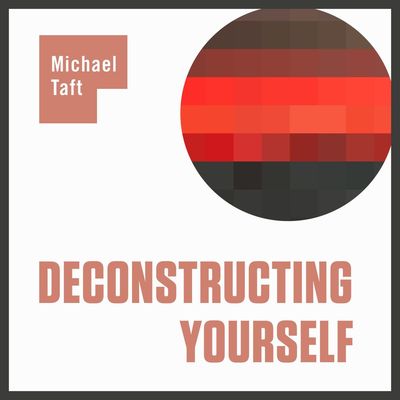Dedicated to liberation in all its forms, Deconstructing Yourself is passionate about fearlessly investigating, attempting, and questioning all things to do with awakening, meditation, mindfulness, brain hacking, consciousness, neurofeedback, and more.Your host Michael W. Taft interviews some of the most interesting thinkers, authors, and teachers around, as well as other offerings. In this hard-hitting, radical, and fun podcast we look at secular post-, non-, un- Buddhism, Vajrayana, nondual Hindu Tantra, philosophy, the neuroscience of the sense of self, neurofeedback and the consciousness hacking movement, aspects of artificial intelligence, entheogens, and much more.If you’re looking for fresh directions, free from dogma and conformism, think of the Deconstructing Yourself podcast as the radical cafe where you can hear from the most interesting luminaries either from the outside edges of dharma, or a fresh take from more traditional teachers. If you’re interested in more, check out the Deconstructing Yourself website at https://deconstructingyourself.com.
https://deconstructingyourself.com
episode 41: Deconstructing Sensory Experience, with Michael Taft
In this episode, host Michael Taft shares a map of deconstructing sensory experience. This is intended to help orient you to your vipassana meditation practice; helping you to understand where you’re at, where you’re going, and what to look for next. A basic map of vipassana.
Note: this is only a map, only a model. Just like a menu is not food, this model is not claiming to be reality. It’s just a handy way to help you orient your practice.
This model doesn’t count for nondual meditations, high-concentration/jhana practice, etc. It is only to help you with your vipassana practice.
Very important: the inclusion of “Cessation” as level 5 doesn’t mean that level 5 is the final goal of practice. It’s just something that can happen, and is included for the sake of completeness.
These are not discrete or digital stages. They are analog, and shade into one another. Each stage is desirable and useful for various things. No stage is somehow better than another.
In vipassana practice, however, we are usually attempting to tranverse the stack from stage one to stage four. Stage five may or may not be something that happens.
When our practice is very skilled, we can also tranverse the stack from bottom to top (4 -> 1) and do what we might call “nondual vipassana” or something akin to many Mahamudra practices.
Summary of Stages
Stage 1 - Conceptual - Thinking about sensory experience objects using words.
Stage 2 - Phenomenal Object - Contacting the phenomenology of sensory experiences in the form of objects.
Stage 3 - Flow / Change - Contacting the phenomenology of sensory experiences as vibration, waves, or change.
Stage 4 - Pure Awareness - Noticing awareness itself with no content.
Stage 5 - Cessation - Sudden collapse of awareness.
Support the Deconstructing Yourself podcast via Patreon.
See Privacy Policy at https://art19.com/privacy and California Privacy Notice at https://art19.com/privacy#do-not-sell-my-info.
